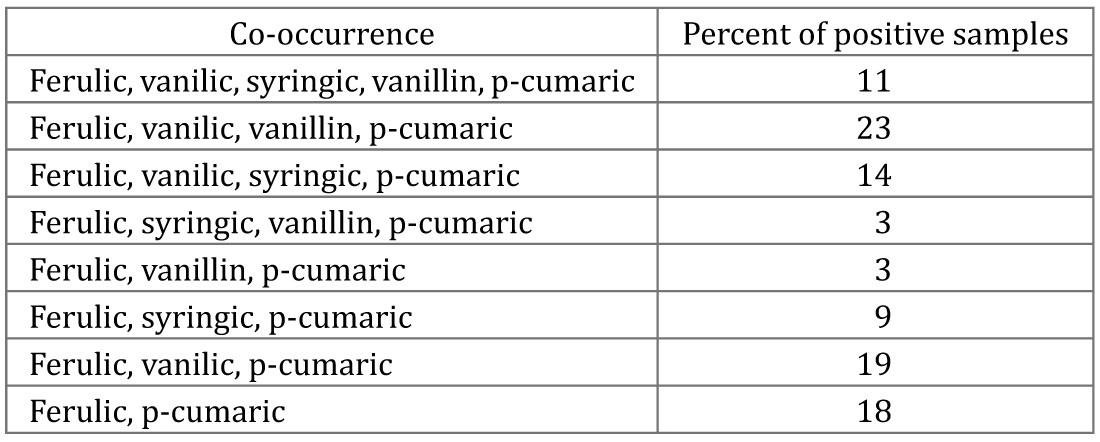Phenolic acid content in wheat grain (Triticum spp) of different genotypes
Keywords:
ferulic acid, phenolic acids, wheatAbstract
One of the most significant factors affecting resistance to fungal diseases in winter wheat genotypes is the content of phenolic compounds. A total of 100 winter wheat cultivars were investigated. The contents of five phenolic acids: ferulic, vanillic, syringic, vanillin, p-coumaricand free phenolic acids (FPA) were determined. Considerable variation was found both within tested cultivars. Among the investigated acids the greatest amounts were recorded for ferulic acid and its mean concentration was 975 µg g-1, p-coumaric acid was characterised by a lower mean concentration (52 µg g-1), while the lowest concentration was recorded for vanillin, amounting to 5 µg g-1. Ferulic acid state 92.4% of total phenolic acids. Significant differences in content of ferulic acids between genotypes were observed. The group of winter wheats coming from different European countries was characterized by high variation in the contents of ferulic acid, ranging from 320 to 3103 µg g-1. No significant correlations were observed between ferulic acid and other phenolic acids. Results provide the basis for further studies in this field.

Downloads
Published
Issue
Section
License
Aquellos autores/as que tengan publicaciones con esta revista, aceptan las Políticas Editoriales.


